Higher classification Ptychocheilus | Phylum Chordata Family Cyprinidae Scientific name Ptychocheilus lucius Rank Species | |
 | ||
Similar Razorback sucker, Ptychocheilus, Humpback chub, Bonytail chub, Northern pikeminnow | ||
Arizona verde river fishing rare colorado pikeminnow
The Colorado pikeminnow (formerly squawfish) Ptychocheilus lucius is the largest cyprinid fish of North America and one of the largest in the world, with reports of individuals up to 6 ft (1.8 m) long and weighing over 100 pounds (45 kg). Native to the Colorado River basin of the southwestern United States, it was formerly an important food fish for both Native Americans and European settlers. Once abundant and widespread in the basin, its numbers and range have declined to the point where it was listed as endangered in 1967, a fate shared by the three other large Colorado basin endemic fish species: bonytail chub, humpback chub, and razorback sucker. The Colorado pikeminnow is currently listed as vulnerable by the IUCN.
Contents
- Arizona verde river fishing rare colorado pikeminnow
- Description
- Biology
- Range
- Recovery efforts
- References
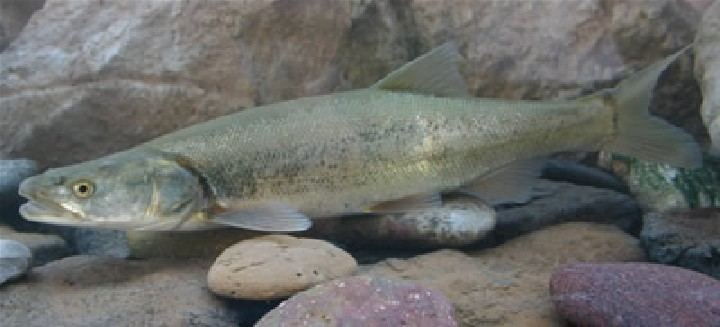
Description
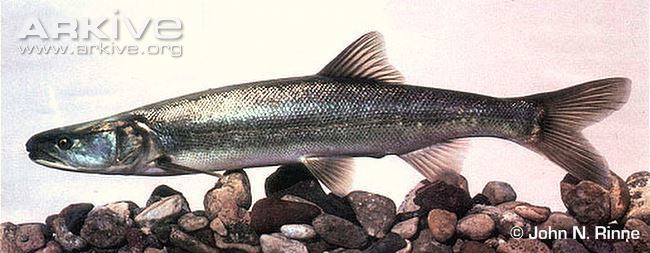
Like the other three species of pikeminnow, it has an elongated body reminiscent of the pike. The cone-shaped and somewhat flattened head is elongated, forming nearly a quarter of the body length. Color grades from bright olive green on the back to a paler yellowish shade on the flanks, to white underneath. Young fish also have a dark spot on the caudal fin. Both the dorsal and anal fins typically have nine rays. The pharyngeal teeth are long and hooked.
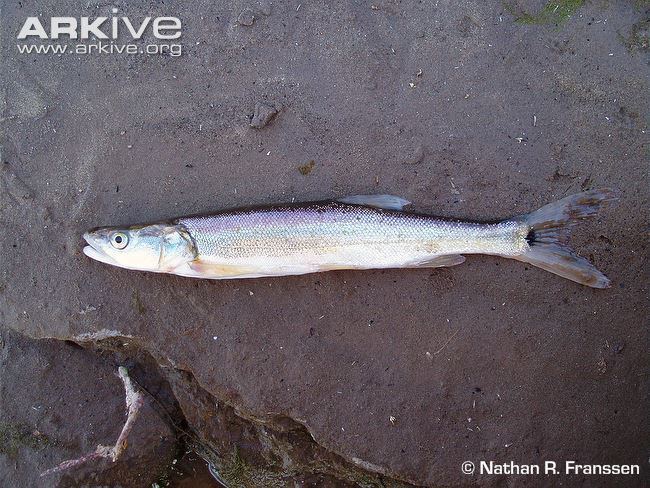
The reports of 6 ft individuals are estimates from skeletal remains but a number of community elders, interviewed by the Salt Lake Tribune in 1994, reported that such individuals were once common. Catches in the 1960s ranged up to 60 cm for 11-year-old fish but, by the early 1990s, maximum sizes reached no more than 34 cm. Biologists now consider the average size of an adult pikeminnow to be between 4 and 9 pounds, and reports of the fish latterly exceeding 3 feet in length are now in question.
Biology

Young pikeminnows, up to 5 cm long, eat cladocerans, copepods, and chironomid larvae, then shift to insects at around 10 cm, gradually eating more fish as they mature. Once they achieve a length of about 30 cm, they feed almost entirely upon fish.

This fish has an ontogenetic separation of life history stage. The altricial young emerge from whitewater canyons, enter the drift as sac-fry and are transported downstream. Habitat for the young fish is predominately alongshore backwaters and associated shorelines of more alluvial reaches of the turbulent and turbid rivers of the Colorado system. In contrast, adults reside in more well-defined channels, where they seek eddy habitats and prey on suckers and minnows. Colorado pikeminnow are potamodromous, making freshwater spawning migrations to home in on their natal areas. These migrations can begin as upstream or downstream movements, depending on the location of home range of individuals, and may involve 100 or more km. Spawning occurs around the summer solstice, with declining flows and increasing temperatures. Breeding males are bronze-colored and heavily covered with tubercles while females are generally larger, lighter in color and with fewer tubercles. As the fish reach the spawning location they stage in deeper pools and eddies and make spawning runs into nearby runs and deep riffles, where the adhesive eggs are released. Upon hatching and swim-up the small fry are entrained and carried 50–100 km downstream.
Range
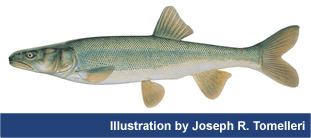
The species was once found throughout the Colorado basin, so occurred in Arizona, California, Colorado, Nevada, New Mexico,Utah, and Wyoming, as well as in Mexico. Damming and habitat alterations have confined the species to the upper Colorado drainage; currently, remnant populations are known from the Green River, Gunnison River, White River, San Juan River, and Yampa River. Additionally, land managers in the past have attempted to reduce the native fish population of the Colorado basin in favor of sport fishing. In the mid-1960s, the Federal government poured the poison rotenone into the Green and San Juan Rivers, attempting to create an environment supportive of non-native sportfish. They have been transplanted to the Salt River and Verde River, both within their native range.
Recovery efforts
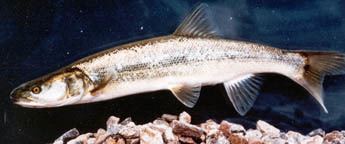
Recovery efforts are focused on operating dams to create more of a natural flow pattern, improving fish passage up- and downstream, and restricting stocking of nonnative fish to reduce ecological interactions. Thus far, progress in recovering the pikeminnow has been limited.

